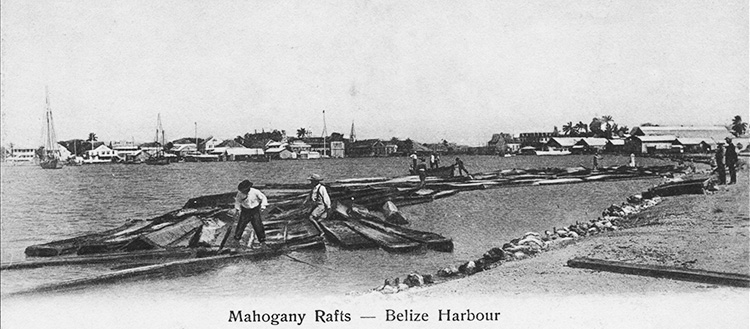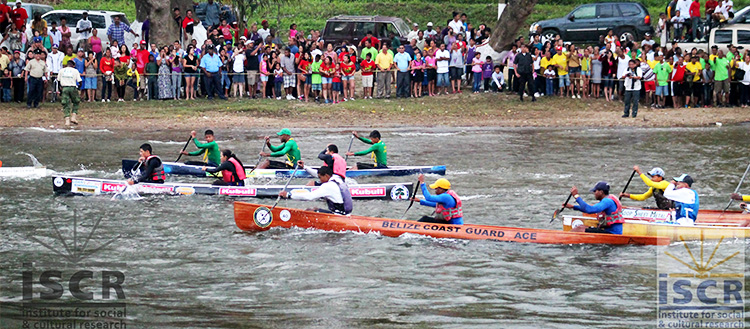The Belize River also referred to as “Old River” has been a primary route for travel and trade throughout Belize’s history. The river commences at the confluence of the Macal and Mopan rivers in San Ignacio Town and dissipates into the Caribbean Sea in Belize City. It is about 180 miles in length and is of great importance to Belize’s environment and peoples.
The earliest inhabitants who made use of the river were the Paleo-Indians and the Maya. Their ancestors crossed the Bering Strait over twenty-five thousand years ago. During the Classic period (300AD-900AD), the Belize River was a major trade route to Maya sites throughout Belize. At its peak, there were probably almost twenty-five thousand people living in the Belize River Valley.
By the 17 Century, Europeans had begun to settle Belize in order to extract logwood (Haematoxylum campechianum). Logwood is a small spiny tree with a corrugated trunk that appears like a cluster of stems fused together. Logwood was chiefly used to produce black, blue and purple dyes for the textile industry in Europe. The Belize River and the New River among others became important areas for extracting logwood, and for transporting people and goods. Exports of logwood commenced about the 1650s and continued in large numbers until the 1760s.
By 1770, when the sale of logwood was extremely low, the settlers turned to the exportation of mahogany (Swietenia Macrophilla). The mahogany industry remained the major export of Belize until the middle of the 20th century (Bolland, 2009, pp. 51). This required a high number of people to work and the settlers turned to the large scale enslavement of Africans in Belize.
During the extraction process, the mahogany logs were singly thrown from the river banks into the river in order to transport them to Belize City. The force of the current would float the logs to the booms which were large cables placed across the rivers at the different banks. At the booms, the logs were once more collected and re-arranged into separate rafts for their final destination in Belize City. Sometimes more than a thousand logs together were supported by the booms (Henderson, 1809).
This gave rise to numerous settlements along the banks, many of which have grown into villages. The Old River families include: The MacFadzens of Willows Bank, the Burns of Big Falls, the Talbots of Double Head Cabbage, the Russells at Bermudian Landing, and the Flowers of Flowers Bank.
La Ruta Maya Belize River Challenge
During the colonial period, dories, pitpans, and the Cayo boats were the main vessels used to travel along the Belize River Valley. Dories were usually made from mahogany and cedar with a length of 25ft to 50 ft. Pitpans were dug from cedar trees and some measured 35ft in length with a center that could accommodate passengers and paddlers. In 1809, Captain Henderson remarked that the enslaved Africans were the best paddlers in the dory-races held during the Christmas holidays.
The first Cayo Boat to travel from Belize City to San Ignacio and back was the “Clearnace Mengel” which occurred between the 10th and 19th of January in 1905. The Cayo boat era waned in 1947-1949 when the Western Highway was built.
The Belize River has served and continues to serve vital uses to the people of Belize. In recent years, the value and beauty of the river has been celebrated during the annual La Ruta Maya Belize River Challenge. The race occurs each year in March in conjunction with National Heroes and Benefactors Day and allows locals and tourists to journey along the most traveled route in Belize’s history.
By Rolando Cocom
References:
Bolland, N. (1977). The formation of a Colonial Society: Belize from Conquest to Crown Colony (pp. 36-48).
Bradley, Leo. (1962). Glimpses of our history. Manuscript: Belize Archives
Henderson, George (1809). An account of the British Settlement of Honduras. London: C. and R. Baldwin.
Shoman, A. (2011). A History in 13 Chapters. Belize: Angelus Press
How to cite this article:
Cocom, Rolando. “The Belize River: A brief history”. Belize History Association. Retrieved from: Insert URL


